When you begin your search for a diamond engagement ring, you’ll often hear about the 4Cs: cut, clarity, color, and carat. While all of these factors are important in defining a diamond’s quality, carat is the one that many consumers focus on the most when making their decision.
So, what exactly does carat measure in diamonds?
Carat is a unit of measurement that specifically refers to the weight of a diamond. It’s important not to confuse carat with “karat,” which is a measurement used to determine the purity of gold.
How does the carat weight impact the price of a diamond? And what other factors influence a diamond’s price?
In this comprehensive article, we will address these questions and explore many other aspects related to carat weight and diamond pricing. Be sure to read the entire article to gain a better understanding of this important factor in diamond selection.
DESIGN YOUR OWN ENGAGEMENT RING: START WITH A SETTING OR START WITH A DIAMOND. IT’S REALLY UP TO YOU!
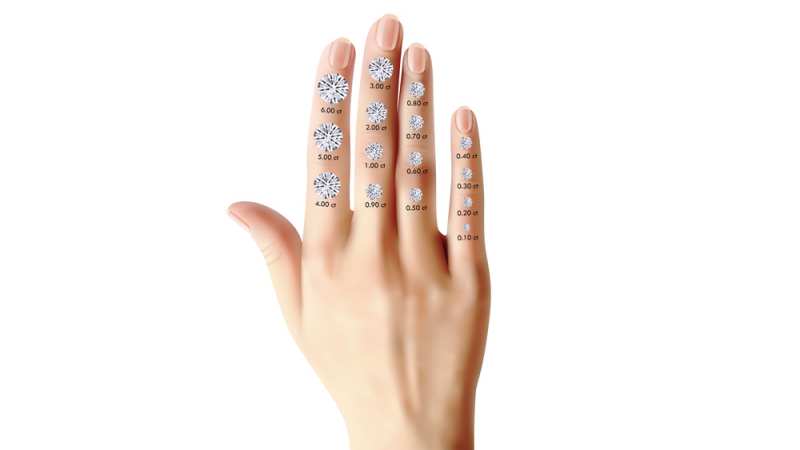
What Is Diamond Carat?
As we mentioned earlier, a diamond’s carat refers to its weight, with one metric carat equaling 200 milligrams. While carat weight is related to the size of the diamond, it’s important to note that carat weight and size are not the same.
Two diamonds with the same carat weight and shape can appear different based on their cut.
The Significance of Diamond Carat
The importance of carat weight largely depends on personal preference. However, carat weight plays a significant role in determining the price of a diamond.
In terms of pricing, carat weight is often considered the most crucial factor among the 4Cs. Rest assured, we will discuss the other three Cs later in this guide.
That being said, the significance of carat weight is subjective. If you desire a larger diamond, then carat weight may be a top priority for you. On the other hand, if size is not your primary concern, you may find other factors such as clarity to be more important in your diamond selection.
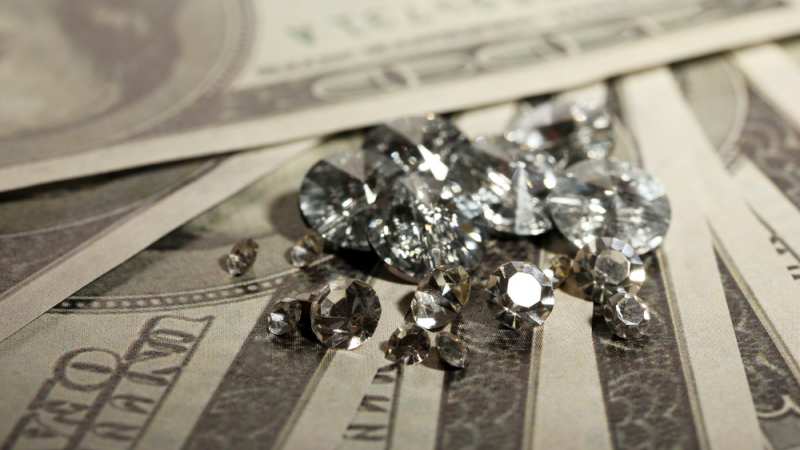
How Carat Affects The Price Of A Diamond
In general, a diamond’s price tends to increase with higher carat weight. If all other factors are equal, the larger the carat weight, the higher the price of the diamond.
Why is this the case?
Well, larger diamonds are more rare and therefore more desirable, contributing to their higher price tag.
However, it’s important to note that two diamonds of the same carat weight can have different values based on other factors such as cut, color, and clarity.
In other words, while carat weight does play a significant role in determining the cost of a diamond, it is not the sole factor that determines its price.
A diamond may have a high carat weight, but if it is poorly cut or lacks good clarity, its price will be lower rather than higher. These additional factors greatly influence the overall value of the diamond.
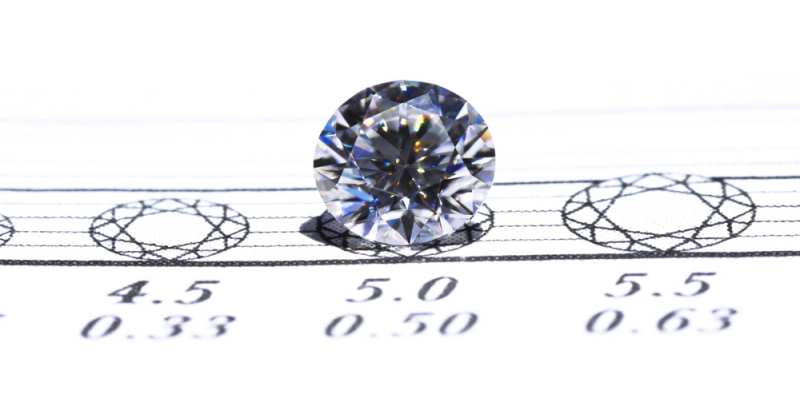
How Carat Weight Impacts The Size Of A Diamond
Contrary to popular belief, diamond carat weight is not the same as diamond size. This is a common misconception.
Carat weight refers to the mass or weight of the diamond, while size refers to its physical dimensions. Interestingly, the cut of the diamond can have a greater influence on its perceived size than its actual carat weight.
It may be surprising, but a diamond with a higher carat weight and a poor cut can actually appear smaller than a diamond with a lower carat weight but a better cut.
For example, a 1-carat round brilliant cut diamond is not half the size of a 2-carat diamond. On average, a 1-carat round brilliant diamond has a diameter of about 6.4 millimeters, while a 2-carat diamond has a diameter of around 8 millimeters. The 2-carat diamond is larger, but not double the size of the 1-carat diamond.
This highlights the importance of not disregarding diamonds with smaller carat weights. A well-cut diamond with a lower carat weight can still have an impressive appearance and offer great value.
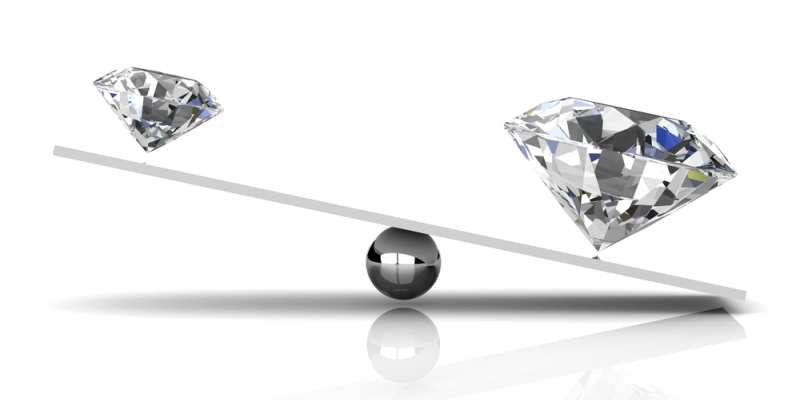
How Diamond Carat Is Weighed
Diamond carat weight is measured using precise scales that are specifically calibrated for small weights. These scales are commonly found in diamond-grading labs like the GIA or AGS.
In the diamond industry, a point system is often used to discuss carat weights, although it may not be commonly expressed to customers. Understanding this point system can be helpful when talking to jewelers.
Here’s a quick explanation: In this system, a diamond is referred to as having a certain number of points. It is based on the fact that one carat is equivalent to 100 points, with each point representing 0.01 carats.
For example, if someone mentions a “95 pointer,” they are essentially referring to a diamond that weighs 0.95 carats.
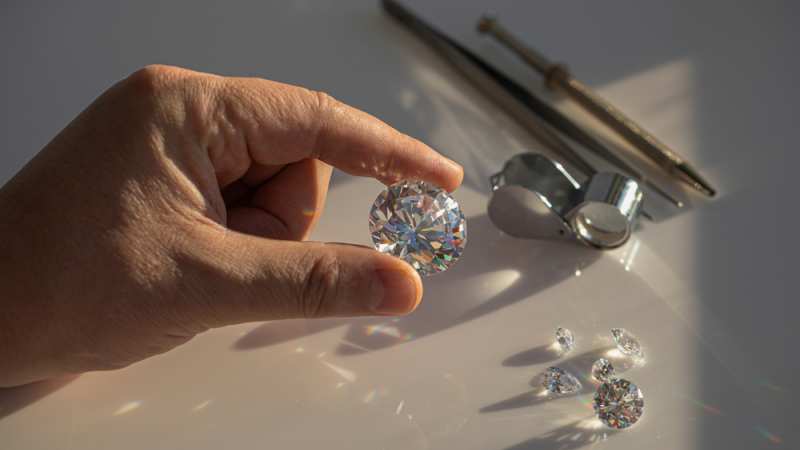
Money-Saving Tips
Many consumers tend to prioritize carat weight as the most important factor when choosing a diamond, assuming that a higher carat weight automatically makes the diamond more impressive. However, it’s crucial to understand that bigger doesn’t always mean better.
While carat weight is significant, it’s important not to overlook the other aspects of diamond quality: cut, color, and clarity. The highest-quality diamonds excel in all these areas, not just in carat weight.
It’s not advisable to disregard cut, color, and clarity solely to obtain a diamond with a higher carat weight. Doing so could result in a gem with hidden flaws, lackluster appearance, or poor color.
Consider exploring diamonds with slightly lower carat weights to find a more affordable option. The difference between a 0.95-carat and a 1-carat diamond is virtually indistinguishable to the naked eye but can make a substantial difference in price.
Be aware that certain “magic sizes,” such as 2-carat diamonds, are particularly sought after and come with higher price tags. A 1.90-carat diamond with a similar appearance can be significantly more affordable.
If you desire a diamond with a higher carat weight but have a limited budget, consider choosing a shape that appears larger due to its weight distribution, such as a round brilliant cut. Additionally, if you’re willing to compromise on cut for carat weight, opt for a shape that is more forgiving in terms of the diamond’s visible quality to the naked eye.
For example, an emerald-cut diamond has fewer facets compared to a round brilliant cut, making imperfections more noticeable. In this case, you could select an emerald-cut diamond with a higher carat weight and slightly lower clarity, as it will reduce the cost without being too apparent.
If you prioritize carat weight over other factors, be open-minded and allow your jeweler to hand-select some diamonds for you. They can guide you in finding options that strike a balance between carat weight and overall diamond quality.
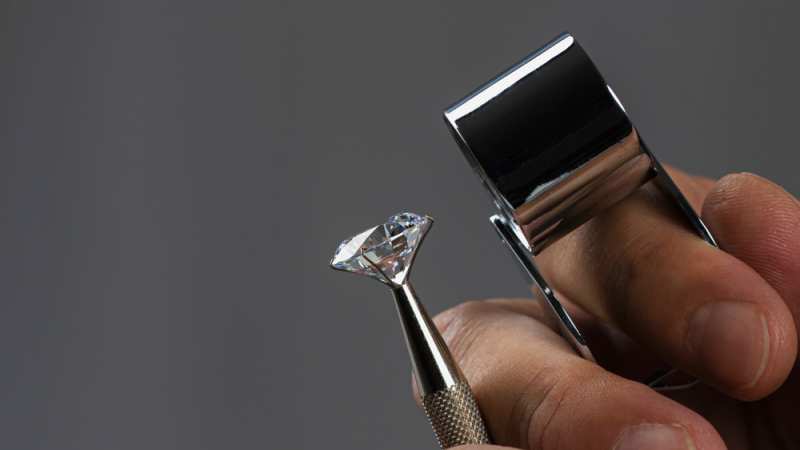
Other Factors That Affect Diamond’s Price
To ensure you make an informed decision and get the best value for your money when buying a diamond, it’s crucial to consider factors other than carat weight. Let’s explore the key elements that impact a diamond’s price.
Diamond’s Cut:
The cut of a diamond is the most important factor to consider. It determines the diamond’s sparkle, brilliance, and overall beauty. A well-cut diamond can maximize light reflection, masking any flaws and enhancing its appearance. It’s important to note that cut refers to the diamond’s proportions, symmetry, and polish, not its shape. Prioritizing a high-quality cut is recommended, as it significantly impacts the stone’s visual appeal.
Diamond’s Color:
The color of a diamond also plays a significant role in its overall appearance. Diamonds are graded on a scale from D to Z, with D being colorless. However, most retail jewelry shops sell stones up to the K color grade. It’s challenging to distinguish between completely colorless and nearly colorless diamonds with the naked eye. Opting for a diamond in the G color range is often considered a good balance between colorless and a slightly noticeable tint.
Diamond’s Clarity:
Clarity refers to the presence of flaws within a diamond, including inclusions (internal flaws) and blemishes (surface flaws). Most diamonds have flaws, but what matters is their visibility and location. Clarity is graded based on inclusions visible under magnification. While high-clarity diamonds may have a higher price due to rarity, it’s important to note that flaws become less relevant when they are not visible to the naked eye. A clarity grade of VS2 is often a safe choice.
Certification:
Having a certification from a reputable lab such as GIA or AGS is crucial. It confirms the authenticity of the diamond and provides an unbiased evaluation of its quality. A certification is especially important for higher-value diamonds. However, it’s worth noting that some companies may not offer a certificate for diamonds with lower clarity grades.
Diamond Fluorescence:
Fluorescence refers to the soft blue glow that some diamonds emit under a blacklight. It is a natural characteristic in about one-third of diamonds. In some cases, fluorescence can enhance the appearance of diamonds with lower color grades by countering yellow tints. However, fluorescence in yellow or green can decrease a diamond’s value unless it’s a fancy-colored diamond. Medium to strong blue fluorescence can make a diamond appear milky and lower its value.
By considering these factors along with carat weight, you can make a well-informed decision when purchasing a diamond. Remember, it’s about finding the right balance between the 4C’s to suit your preferences and budget.
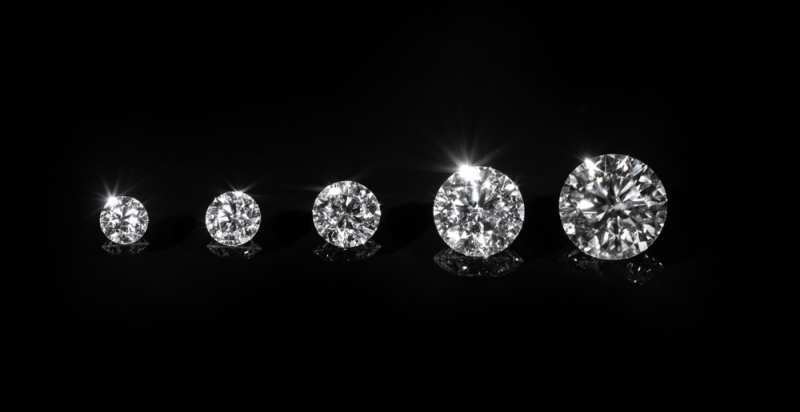
Bottom Line
What does carat measure in a diamond? Carat is a weight measurement that determines the size of a diamond, with 1 carat equaling 200 milligrams. While carat weight is generally associated with the size of the stone, it’s important to note that a bigger diamond doesn’t always mean a higher carat weight.
While diamonds are typically priced based on their carat weight, it’s essential to consider other factors like cut, color, and clarity when selecting a diamond. Finding the right balance among these aspects is key to finding the perfect stone that suits your preferences.


